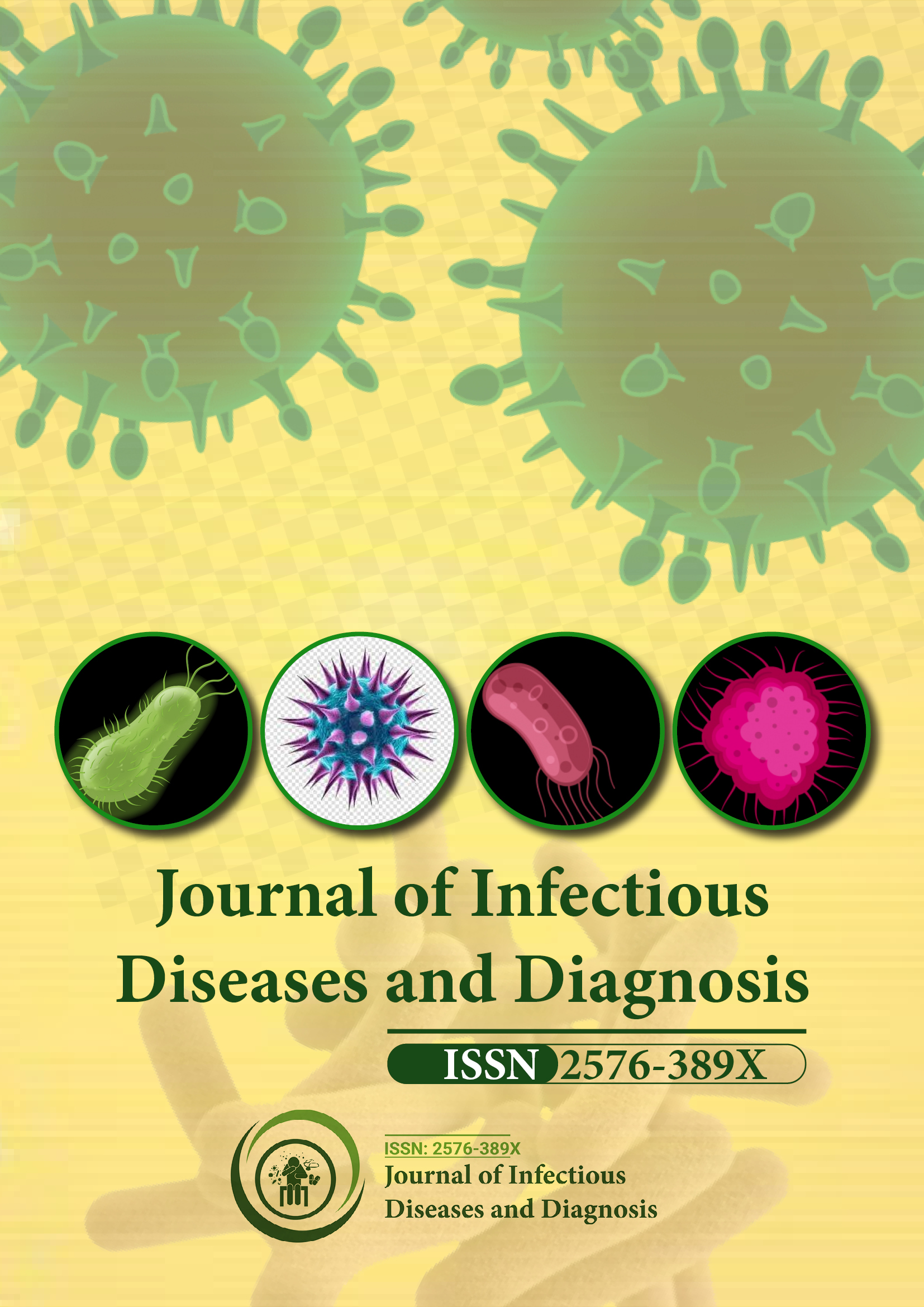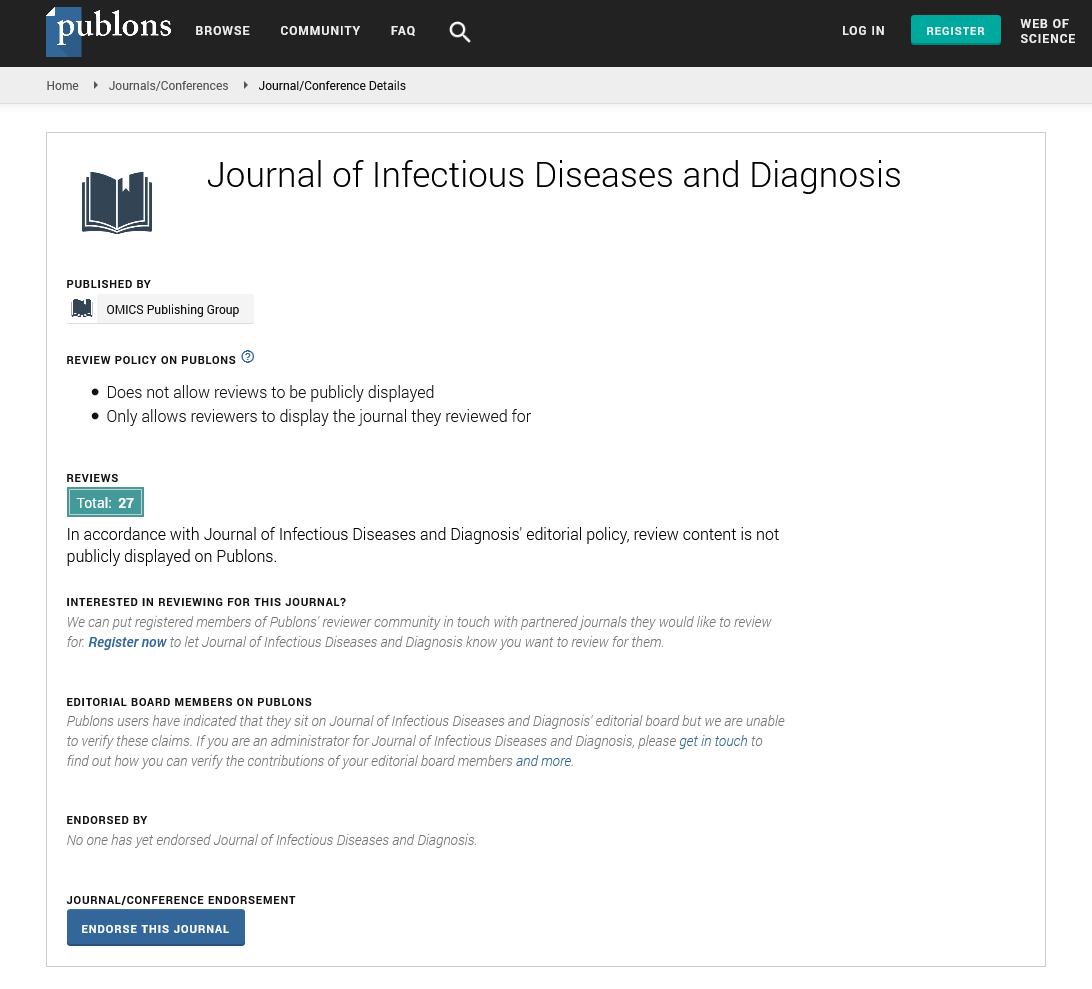Indexed In
- RefSeek
- Hamdard University
- EBSCO A-Z
- Publons
- Euro Pub
- Google Scholar
Useful Links
Share This Page
Journal Flyer

Open Access Journals
- Agri and Aquaculture
- Biochemistry
- Bioinformatics & Systems Biology
- Business & Management
- Chemistry
- Clinical Sciences
- Engineering
- Food & Nutrition
- General Science
- Genetics & Molecular Biology
- Immunology & Microbiology
- Medical Sciences
- Neuroscience & Psychology
- Nursing & Health Care
- Pharmaceutical Sciences
Abstract
Schistosomiasis and Soil Transmitted Helminthiases in Taita Taveta County, Kenya: Prevalence, Intensity and Association with Anaemia and Nutritional Status of Children under 5 Years
Paul Nyika Ngaluma*, Washington O. Arodi, George M. Gachara, Jimmy Hussein Kihara, Murima P. NgaâÂÂngâÂÂa
With delayed treatment, schistosome and soil transmitted helminth (STH) infections in young children (<5 years) could potentially lead to irreversible lifelong detrimental health effects. This is because these infections are known to cause suboptimal growth and development in this critical phase of life. The present study sought to document the burden of schistosome and STH infections in Taita Taveta County, Kenya, by determining the prevalence and intensity of the infections in children less than 5 years of age. The study also appraised the association between infections with schistosomes, anaemia and nutritional status in children. A total of 132 children, 53.8% males, were enrolled in the survey. The number of children who were diagnosed with schistosomiasis was 37 (prevalence 28.0%; 95% confidence interval (CI) 21.1%-36.2%). Infections with S. haematobium and S. mansoni were detected in 18.9% (95% CI 13.2%-26.5%) and 15.9% (95% CI 10.7%-23.1%) of the surveyed children, respectively. Seventeen children tested positive for infection with any STH (prevalence 6.8%; 95% CI 3.6%-12.5%). Species-specific prevalences of STH were: A. lumbricoides (6.8%), hookworm (4.5%) and T. trichiura (1.5%). Four children (16.0%) had heavy intensity S. haematobium infections. No heavy intensity infections were detected in children who were infected with STH and S. mansoni. Nutritional indices which were associated with schistosome infections included stunting ((odds ratio (OR) 3.665 (95% CI 1.443-9.309), p=0.006) and being underweight (OR 12.698 (95% CI 3.107-51.900, p<0.001). Anaemia was more prevalent among children who tested positive for infections with schistosomes when compared with their schistosome-negative counterparts (57.1% vs. 42.9% respectively, OR 7.897 (95% CI 3.383-18.438), p<0.001). The study established that schistosome and STH infections are prevalent in children under 5 years in the study area thus presenting a potentially significant public health concern. The children should be prioritized for interventions including being incorporated in the mass deworming programme which currently targets school age children.
Published Date: 2020-03-31; Received Date: 2020-03-10

